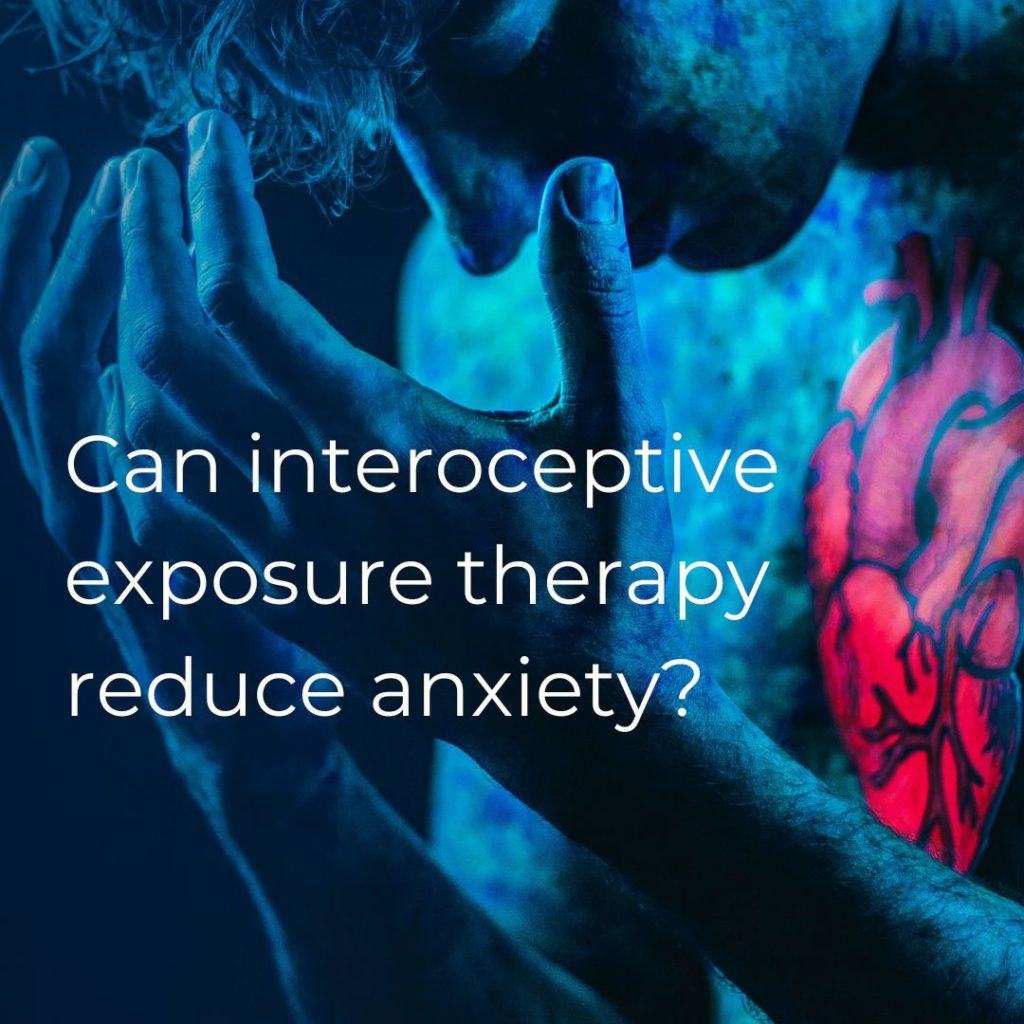Interoceptive exposure is a therapy that aims to help people reduce their experience of anxiety and overcome fear of bodily sensations they associate with anxiety. These sensations include things like increased heartrate, chest tightness and shallow breathing.
There’s growing evidence to suggest the therapy is effective when it comes to treating certain anxiety disorders 1 2. Ted Schubert, an expert at Anxiety & Behavioral Health Clinic in Florida, told us: “Research collected over many years consistently shows interoceptive exposure therapy is really effective at helping to reduce anxiety.” So, how does the therapy work and why do we get anxious in the first place? We take a look in this post.
(By the way, you can check out our full chat with Ted at the bottom of this page – he really knows his onions and it’s well worth a watch 👇)
Why do we get anxious?
Anxiety is how we describe unpleasant feelings that we experience when our bodies react to stress. There are lots of things that may lead us to experience anxiety, from exams to financial worries, and everybody’s triggers may be different.
When we’re anxious, changes take place in our nervous, hormonal and immune systems, which we sense as physical signals, like:
- Increased heart rate
- Fast, shallow breathing
- Dry mouth
This is part of what’s known as the stress response. Our bodies are deciding where best to direct our resources, priming us to deal with a stressful situation. So, while the feelings can be quite unpleasant sometimes, anxiety is perfectly natural and noticing bodily signals is very often helpful 3. But other times it can become an issue.
When does anxiety become a problem?
When anxiety starts to negatively affect our quality of life or damage our health, it can become a problem. People who experience long-term anxiety, may start to feel anxious about feeling anxious, and become fearful of the physical sensations associated with anxiety.
We may misinterpret an increased heartrate as a sign we’re about to have a heart attack. Shortness of breath may be misread as meaning a panic attack is imminent. Forgetting something, like where we put our keys, could be mistaken as a sign of cognitive decline. This can create an unhelpful cycle, reinforcing our anxiety and fear of certain bodily sensations 4.
How does interoception exposure therapy work?
Interoceptive exposure therapy, exposes us to the bodily sensations that trigger our anxiety. It can be tricky to turn these sensations on and off, so there are several techniques a therapist may use to help us induce them. Breathing through a straw can help us recreate shortness of breath, running up a flight of stairs can increase our heartrate and spinning on the spot can help us feel dizzy.
With the guidance and support of their therapist, the person will be encouraged to focus on the sensation and assess it objectively:
- Where’s it coming from?
- How does it make us feel?
- How long does it last?
- What level of threat does it pose to us?
The idea is that through the planned and predictable exposure to sensations we’re fearful of, we’re able to get used to them in a controlled setting. Gradually, our bodies and minds learn that these sensations aren’t permanent, nor are they dangerous. Ultimately, the therapy aims to help us dial down our fear response to the sensations and learn that our bodies and minds are safe.
Getting the most out of interoceptive exposure therapy
Interoceptive exposure therapy is a gradual process and changes won’t happen overnight. But we can help to prepare ourselves for the therapy by working on our interoceptive awareness in ways unrelated to feelings of anxiety. There are many practices and techniques based on sensing and interpreting what’s going on inside our bodies. Being more in tune with our bodies can help to ensure we’re able to hit the ground running with interoceptive exposure therapy and get the most out of the session.
If you’d like to find out more about interoception and how to improve your interoceptive awareness, we’ve got a page full of useful info here.
Find out more
For more information on interoception exposure therapy, check out our full interview with Ted Schubert below, and you can follow the research of Ted and his colleagues at the Anxiety and Behavioral Health Clinic here: https://abhcfsu.wixsite.com/website-1
For more insights and tips on how to improve your overall wellbeing, please check out the Inner Sense YouTube channel and sign up to our newsletter.



